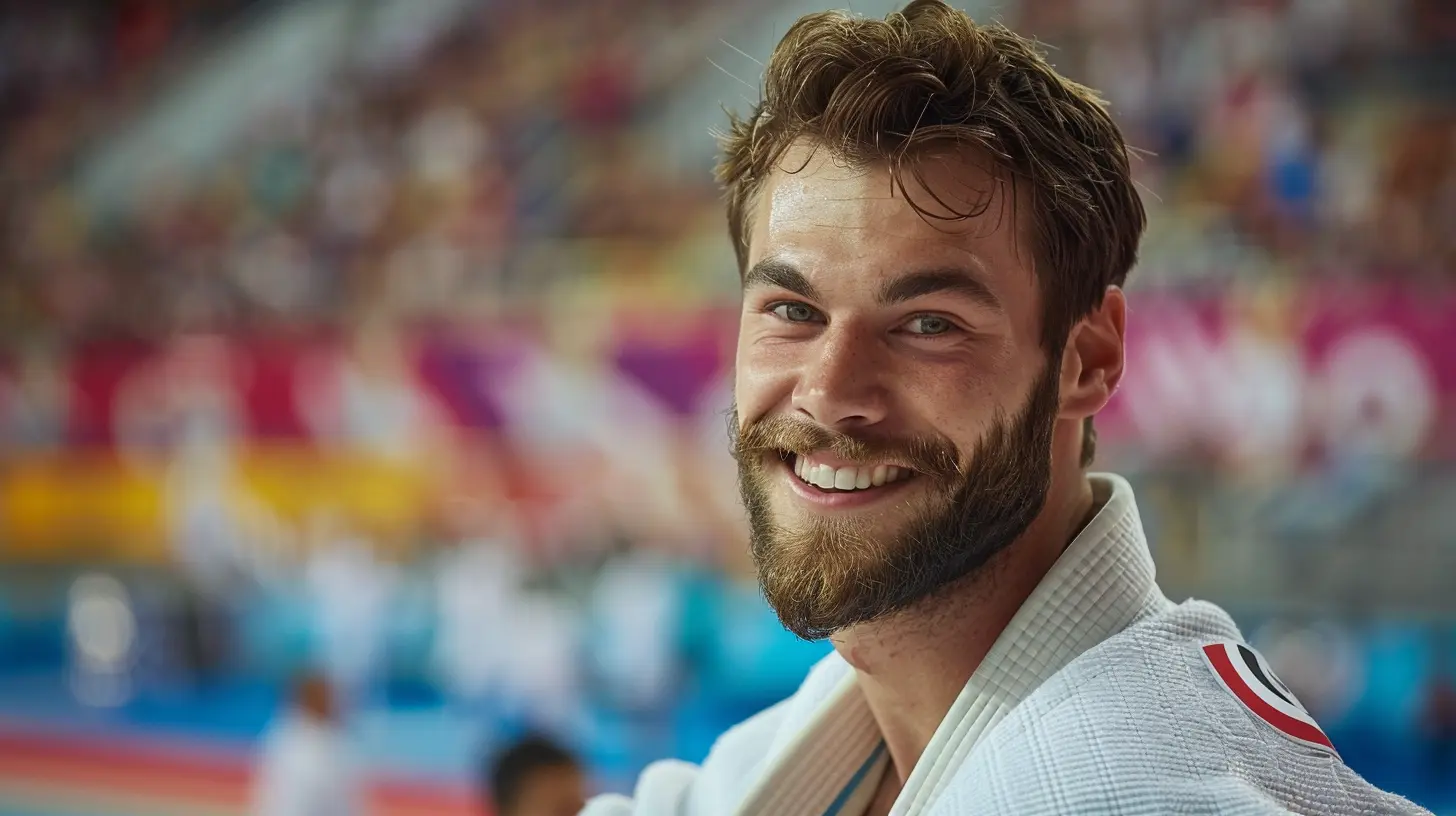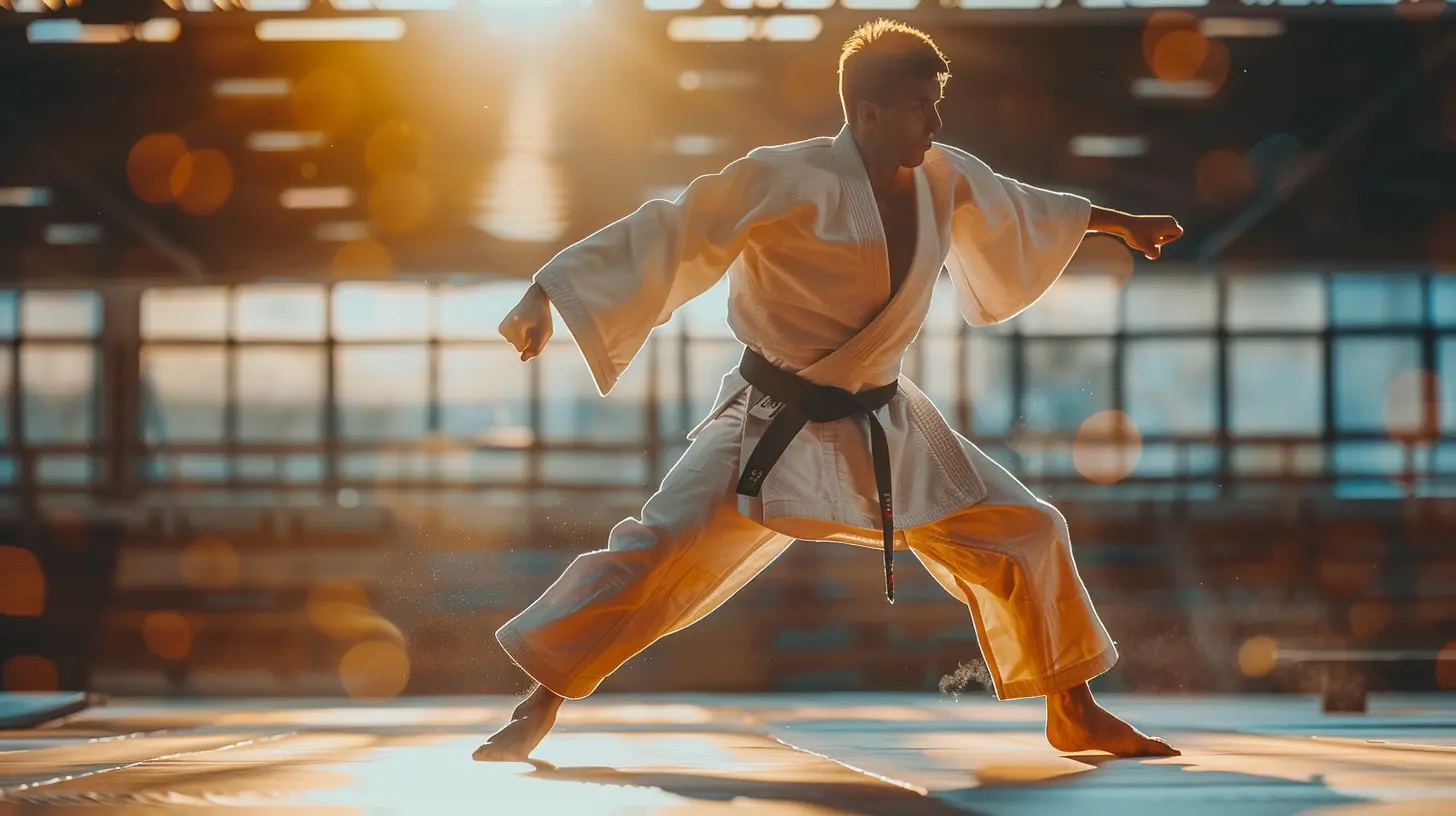Olympic Judo: The Discipline Behind the Throws
22 December 2024
When you think of the Olympic Games, perhaps you imagine the grace of gymnastics, the endurance of marathon runners, or the sheer speed of sprinters. But there's another sport that’s been captivating audiences for decades: Olympic Judo. A sport that combines strength, technique, and a whole lot of discipline. If you've ever watched a judo match, you might have been impressed by the fluid movements and powerful throws, but there’s so much more going on beneath the surface. The art of judo isn't just about brute force; it's about discipline, strategy, and respect.
In this article, we’ll dive deep into the fascinating world of Olympic Judo, focusing on the discipline that lies behind those incredible throws. Ready to hit the mat? Let’s go!

What is Judo?
Before we get into the nitty-gritty of Olympic Judo, let’s start with the basics. Judo, which translates to “the gentle way,” is a modern martial art that originated in Japan in the late 19th century. It was founded by Jigoro Kano, who wanted to create a martial art that emphasized technique over raw strength.Unlike other martial arts that involve striking and kicking, judo focuses on throws, joint locks, and pins. In essence, it’s about using your opponent's momentum and balance against them. Sounds like a game of chess, right? Well, it kind of is! Every move in judo is calculated, and each throw is the result of careful planning, timing, and execution.

Judo in the Olympics: A Brief History
Judo made its Olympic debut in the 1964 Tokyo Games, fittingly held in its country of origin. Since then, it has become a staple of the Summer Olympics, growing in popularity and competition. In 1992, women’s judo was added to the Olympic program, making it a sport for athletes of all genders to showcase their skills on the highest stage.The rules of Olympic judo are straightforward but packed with nuance. Two athletes face off in a contest where the objective is to either throw the opponent onto their back, immobilize them on the ground, or force them into submission with a joint lock or chokehold. Points are awarded based on the effectiveness of the technique, with a clean throw (known as an "ippon") ending the match immediately.

The Discipline Behind the Throws
Now, here’s where things get interesting. While it’s easy to focus on the throws you see during a judo match, what you don’t see is the incredible amount of discipline that goes into mastering this martial art. Let’s break it down.1. Mental Discipline
Judo isn't just a physical game; it's a mental one. In fact, many judo practitioners will tell you that the sport is as much about controlling your mind as it is about controlling your body. Before stepping onto the mat, athletes must be in the right mindset. They need to remain calm under pressure, stay focused on their opponent, and trust in their training.The mental aspect of judo is often compared to meditation. You need to be fully present in the moment, aware of your surroundings, and in tune with your body. This mental discipline is crucial because one lapse in concentration can mean the difference between winning and losing.
2. Technical Mastery
When you watch an Olympic judoka execute a perfect throw, it might look effortless. But trust me, it’s anything but. Judo techniques, known as "waza," take years (if not decades) to master. There are dozens of different throws, each with its own unique mechanics, and athletes spend countless hours perfecting their form.For example, one of the most famous judo throws is the "ippon seoi nage" (one-arm shoulder throw). To execute this move, the judoka must pull their opponent off-balance, rotate their body, and throw the opponent over their shoulder in one fluid motion. Sounds simple, right? Yeah, not so much. The timing, positioning, and balance required to pull this off are incredibly precise. One wrong move, and you're the one getting thrown.
3. Physical Conditioning
Let's not forget the physical side of judo. Olympic judokas are some of the most well-conditioned athletes in the world. It’s not just about having raw strength, though. Sure, upper body strength is important, but judo also requires speed, agility, and endurance.A typical judo match lasts about four to five minutes, but those minutes are intense. Athletes need to be able to move quickly, react to their opponent's movements, and maintain their power throughout the entire match. This requires a high level of cardiovascular fitness, as well as strength training to build the muscles needed for those explosive throws.
4. Tactical Discipline
In judo, strategy is everything. Unlike other combat sports where you might overpower your opponent with strikes or submissions, judo is more about timing and tactics. A judoka needs to be constantly analyzing their opponent’s movements, looking for the perfect moment to execute a throw.One of the key tactics in judo is "kuzushi" – the art of breaking your opponent's balance. Before a throw can even happen, a judoka must first disrupt their opponent’s stability. This might involve a quick tug on the lapel of the judo gi, a shift in body weight, or a sudden change in direction. Once your opponent is off-balance, you can then move in for the throw.
This tactical discipline requires years of practice, as well as a deep understanding of human movement. It’s about being patient, waiting for the right moment, and then striking with precision.
5. Respect and Etiquette
Finally, one of the most important aspects of judo – and something that sets it apart from many other sports – is the emphasis on respect and etiquette. Judo isn’t just about winning; it’s about mutual respect between competitors.Before and after each match, judokas bow to each other as a sign of respect. This bowing is more than just a formality – it’s a reminder that judo is about more than just physical strength. It’s about discipline, humility, and the understanding that, in judo, you are always learning.
In fact, one of the key principles of judo is "jita kyoei," which means "mutual welfare and benefit." This idea promotes the notion that through practicing judo, both you and your opponent grow and improve together.

Training for Olympic Judo
You might be wondering: How do Olympic judokas train to reach the pinnacle of their sport? Well, let’s just say it’s not for the faint of heart.Most top-level judokas train multiple times a day, combining technique drills, sparring (known as "randori"), strength training, and conditioning work. But it’s not just about physical training. Many judokas also incorporate mental training, such as visualization and meditation, to keep their minds sharp and focused.
Another important aspect of judo training is learning how to fall. Yes, you read that right – falling is a big part of judo. Because judo involves a lot of throws, judokas need to know how to fall safely to avoid injury. This technique is called "ukemi," and it’s something every judoka practices regularly.
The Road to Olympic Glory
For most judokas, the dream of Olympic gold is the ultimate goal. But getting there is no easy feat. It takes years of dedication, discipline, and hard work. Many Olympic judokas start training at a young age, often competing in national and international tournaments before qualifying for the Olympics.The competition at the Olympic level is fierce. Only the best of the best make it to the Games, and when they do, they know they’ll be facing opponents who are just as skilled, just as strong, and just as hungry for victory. But that’s what makes Olympic judo so exciting to watch. Every match is a test of skill, strategy, and mental fortitude.
Conclusion: More Than Just Throws
At first glance, Olympic judo might seem like a sport defined by its throws. But as we’ve explored in this article, there’s so much more to judo than what meets the eye. It’s a sport that requires immense discipline – both mental and physical – as well as a deep understanding of strategy and respect.The next time you watch an Olympic judo match, take a moment to appreciate the years of hard work, discipline, and mastery that go into each throw. Because behind every ippon, there’s a story of dedication, perseverance, and the pursuit of excellence.
all images in this post were generated using AI tools
Category:
OlympicsAuthor:

Onyx Frye
Discussion
rate this article
17 comments
Foster Gomez
This article beautifully captures the essence of Olympic judo, highlighting the intense discipline required for mastery. It’s fascinating to see how the sport blends physical skill with mental resilience. As a fan, I appreciate the dedication of athletes who perfect their craft through relentless training and humility.
February 4, 2025 at 4:52 AM

Onyx Frye
Thank you for your thoughtful comment! I'm glad the article resonated with you and captured the dedication and resilience of judo athletes.
Desiree Wilkerson
Absolutely love how judo showcases not just strength, but a whirlwind of strategy and discipline! It’s fascinating to see the elegance behind those powerful throws. Can’t wait for the next Olympic showdown!
January 30, 2025 at 6:05 AM

Onyx Frye
Thank you! Judo truly embodies a perfect blend of strength, strategy, and discipline. Excited for the upcoming Olympic action too!
Nix Brown
This article brilliantly captures the essence of Olympic judo, emphasizing the discipline and dedication required to master the art of throwing. The insights into training and technique are invaluable for both athletes and enthusiasts alike. Thank you for shedding light on this dynamic sport!
January 24, 2025 at 8:47 PM

Onyx Frye
Thank you for your kind words! I'm glad you found the insights on judo's discipline and technique valuable. Your support means a lot!
Yazmin McCartney
Love the focus on discipline!
January 16, 2025 at 11:59 AM

Onyx Frye
Thank you! Discipline is indeed key to mastering the art of judo.
Ivory Johnson
Judo: Where hugging fiercely is an Olympic art form! 🥋✨
January 12, 2025 at 1:23 PM

Onyx Frye
Absolutely! Judo beautifully blends technique and strength, turning every embrace into an artful throw. 🥋✨
Lexi McInnes
Intriguing insights on judo's mental strength!
January 8, 2025 at 5:20 AM

Onyx Frye
Thank you! I'm glad you found the insights on mental strength in judo compelling.
Inez Rogers
Great insights on judo's commitment! Inspiring!
January 4, 2025 at 1:17 PM

Onyx Frye
Thank you! I'm glad you found the insights inspiring!
Megan Maddox
This article brilliantly highlights the intricate balance of technique and mental focus in Olympic judo. Understanding the discipline behind the throws not only enhances appreciation for the sport but also underscores the rigorous training and strategy involved. A must-read for both fans and aspiring judokas!
December 30, 2024 at 2:01 PM

Onyx Frye
Thank you for your thoughtful comment! I'm glad you found the article insightful and appreciate the depth of judo's technique and mental discipline.
Heidi Porter
This article highlights the intricate techniques and mental discipline of judo, showcasing its rich history and the dedication required for Olympic success. A compelling read for both fans and aspiring athletes!
December 27, 2024 at 4:10 AM

Onyx Frye
Thank you for your kind words! I'm glad you found the article engaging and informative.
Carly Kline
This article brilliantly highlights the artistry and discipline of judo in the Olympic arena. It captures the essence of technique and strategy that defines the sport. Understanding the mental and physical rigor behind each throw enhances appreciation for these elite athletes. A must-read for judo enthusiasts!
December 26, 2024 at 1:46 PM

Onyx Frye
Thank you for your thoughtful comment! I'm glad you found the article insightful and appreciate the depth of judo.
Elena McAlister
Ah yes, because nothing says 'discipline' like flipping your opponent on their face!
December 26, 2024 at 4:49 AM

Onyx Frye
Judo emphasizes control and technique, making throws a disciplined art form, not just brute force.
Zylith Dodson
This article beautifully captures the essence of Olympic judo! The focus on discipline and technique truly highlights the dedication required for this sport. It's inspiring to see how athletes channel their hard work into breathtaking throws. Great read for anyone looking to understand the heart of judo!
December 25, 2024 at 12:43 PM

Onyx Frye
Thank you for your kind words! I'm glad the article resonated with you and highlighted the dedication in Olympic judo. Your support means a lot!
Icarus McVicar
Great article! Judo's blend of technique and strategy truly showcases the discipline behind those impressive throws. It's fascinating to see how skill and mental strength come together on the Olympic stage!
December 24, 2024 at 10:02 PM

Onyx Frye
Thank you for your kind words! I'm glad you found the article insightful—judo truly is an incredible fusion of skill and strategy.
Stephanie Rhodes
Grace meets grit: Judo's art in action.
December 24, 2024 at 4:46 AM

Onyx Frye
Thank you! Judo truly embodies the balance of elegance and strength, making it a fascinating sport.
Josie Lawrence
Great article! Judo's emphasis on discipline and technique truly reflects the dedication of its athletes. It's inspiring to see such commitment!
December 23, 2024 at 12:20 PM

Onyx Frye
Thank you! I'm glad you found the article inspiring. Judo's dedication truly sets it apart!
Heather Nguyen
Sure, because throwing people around is totally a disciplined art!
December 22, 2024 at 8:42 PM

Onyx Frye
Absolutely! Judo combines technique, strategy, and respect, making throws an art form of discipline and skill.
Zanthe Pruitt
Throws like art, discipline like a boss!
December 22, 2024 at 4:25 AM

Onyx Frye
Thank you! Judo truly combines the beauty of technique with the rigor of discipline. Glad you enjoyed the article!
MORE POSTS

Top Warm-Up Routines for Peak Performance in Athletics

Enduro Motorcycling: Racing Through the World’s Toughest Terrains
The Most Iconic Olympic Torch Relays of All Time

The Best Female Surfers Making Waves in the Industry

The Role of Captaincy in Leading a Football Team to Victory

How Fan Engagement Drives Revenue in Professional Sports

From Dream to Reality: The Life of an Olympic Athlete

Extreme Trail Running: Tackling the Toughest Terrains on Foot

Fan Engagement Strategies that Drive Brand Loyalty

Legends of the Game: Athletes Who Changed Professional Sports Forever

The Mental Game: How Athletes Handle Pressure in Pro Sports